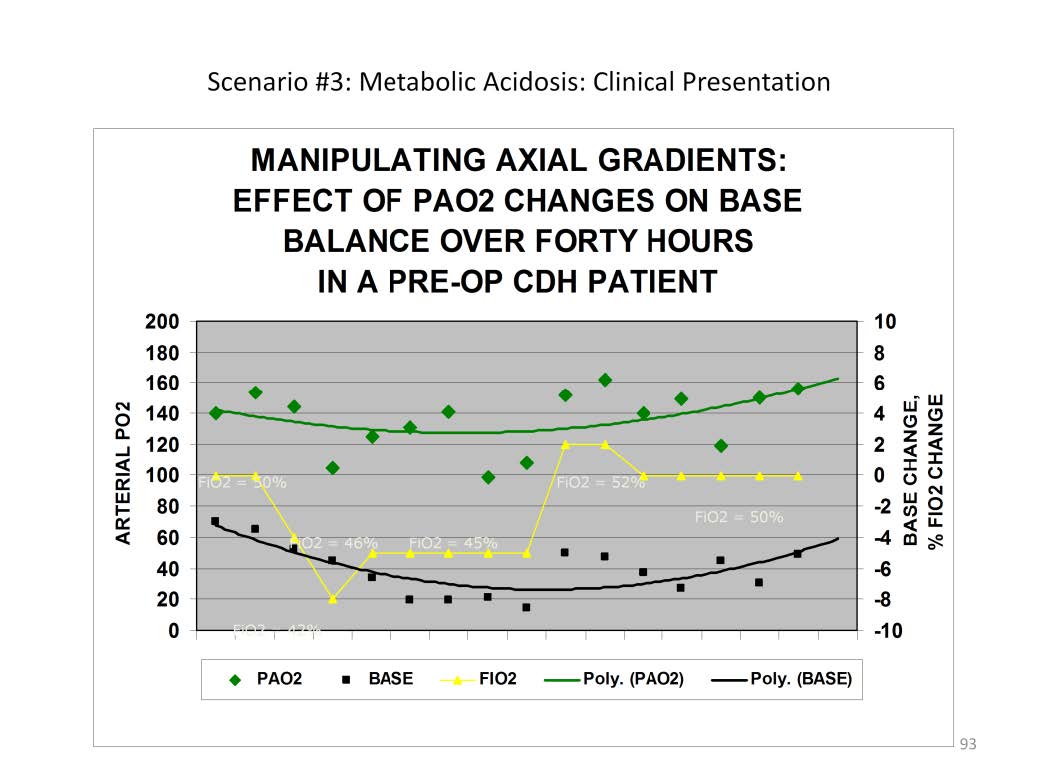
This example shows that even minor changes in the axial gradient can effect oxygenation in a lethal corner. This diaphragmatic hernia patient required epinephrine, dopamine and dobutamine at high levels soon after birth to maintain hemodynamics and oxygenation. However during the time period shown in this example, only 5 μ/min/kg of dopamine was in use and the patient was stable hemodynamically.
Over the 40 hour period shown here, the ventilator FiO2 was actively weaned from 50% to 42%, back to 45%, then 52% and finally back to 50%. As the paO2 trended downward due to weaning of the FiO2, the axial gradients were reduced allowing the development of an anoxic lethal corner. Metabolic acidosis developed and the base deficit increased. When the FiO2 was again increased the axial gradients also increased and the metabolic acidosis and base deficit were reduced.
Starting from arterial pO2 values of 140 ~160 mmHg, the lowest paO2 value achieved as the ventilator FiO2 was weaned from 50% to 42% was ~100 mmHg. In a patient such as this with marginal capillary redundancy a reduction of approximately 50 mmHg in the paO2 can significantly reduce the axial gradient which, in turn would allow the formation of an anoxic lethal corner. The patient became acidotic and developed a base deficit even though the paO2 never dropped below 98 mmHg and the arterial O2 saturation never dropped below 95%. Returning the FiO2 to 50% restored the paO2 to the 140~160 mmHg range. This improved the base deficit by restoring the axial gradient and eliminating the lethal corner.
Some clinicians might consider this as a failure of the patient to tolerate the weaning of the ventilator FiO2 even though the SaO2 never dropped below 95%. But the only failure here was the failure to recognize that the patient had marginal systemic perfused capillary density and needed additional pharmacologic cardiac support to improve capillary redundancy before FiO2 weaning could proceed.

Perfusion Theory is an educational platform for the Oxygen Pressure Field Theory (OPFT). August Krogh’s theoretical concept of the oxygen pressure field is explained and then applied to clinical applications in perfusion practice.